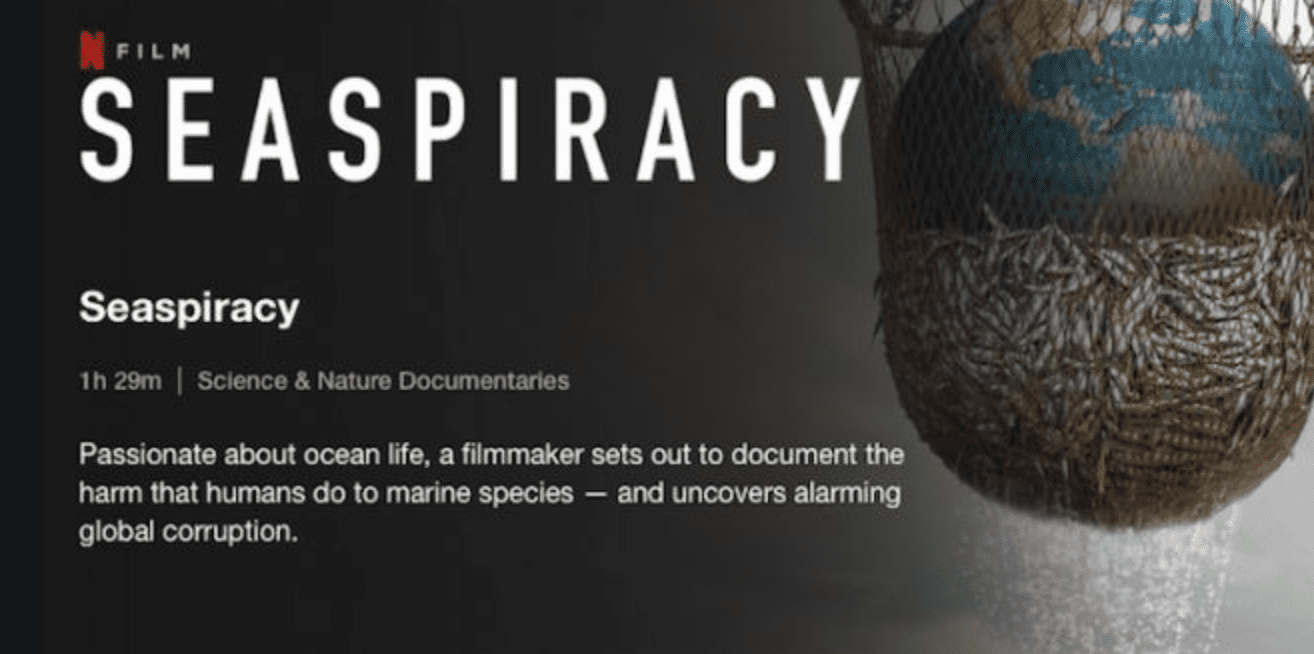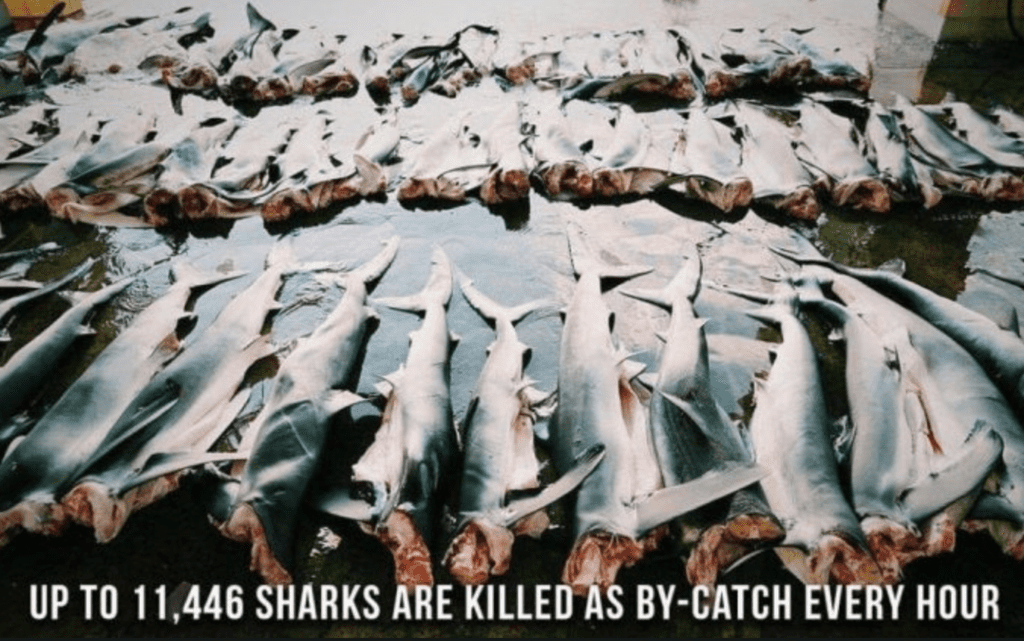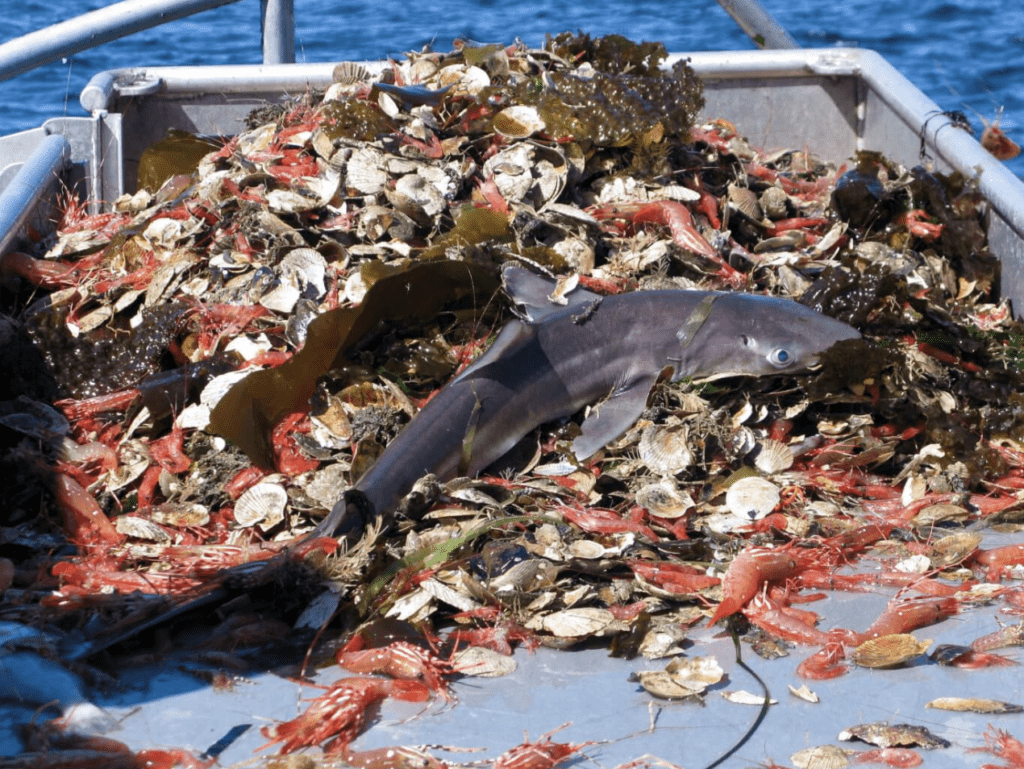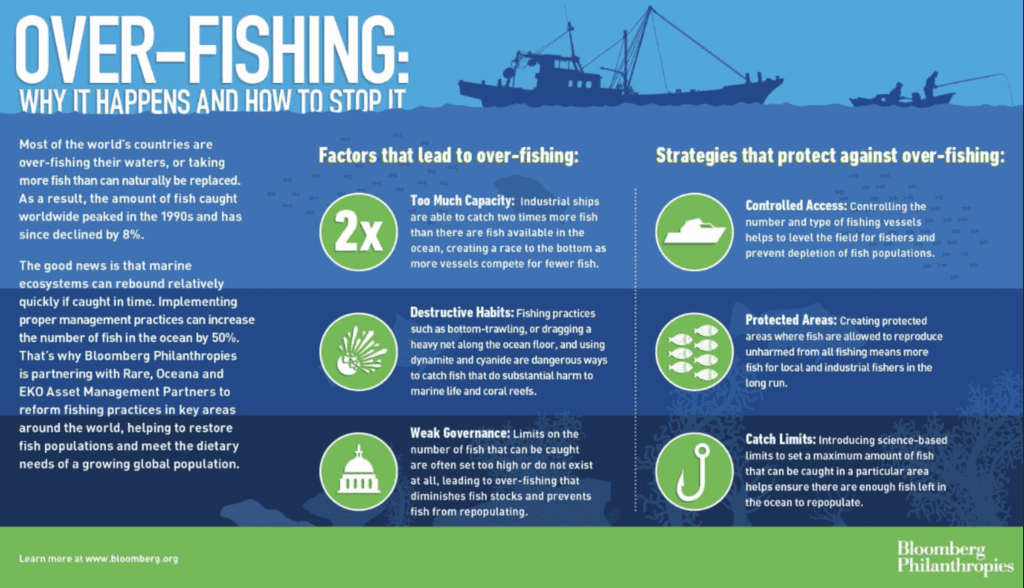Seaspiracy Exposes the Commercial Fishing Industry

Seaspiracy Exposes the Commercial Fishing Industry – In Seaspiracy, filmmaker Ali Tabrizi sets out to make a nature documentary about dolphins. Instead, he ends up tracing and uncovering the world-ending costs of the commercial fishing industry. Tabrizi puts himself in danger by using hidden cameras to film dangerous locations around the world that harbor, protect, and maintain illegal fishing markets, like the dolphin and shark markets. His journey finds him uncovering a deeper and more connected system of fraud, corruption, money, and government cooperation.
Official Trailer for Seaspiracy on Netflix
This documentary is packed with conventional examples, testimonies, evidence, interviews with scientists, researchers, activists, journalists, and other whistleblowers.
Lots of companies, organizations, and governments being “in on it” is also incredibly alarming. Full of stunning revelations, this film is tough but necessary viewing. For one, it greatly helps put better perspective on what is actually harming our oceans. And it isn’t plastic. Well, it is, but more so, commercial fishing is the problem. The fishing industry work collectively to hide these problems, and they control the messaging.
Seaspiracy Exposes the Commercial Fishing Industry & Threatens Director
Directed by young documentary filmmaker Ali Tabrizi, Seaspiracy combines rare footage, past media coverage and interviews with experts, activists and more to paint what is likely the most comprehensive look at the many problems facing our oceans today. From whaling to overfishing to the use of slave labor to meet demands, the film does not shy away from the harsh and often brutal realities of the process that delivers seafood to the plates of consumers across the globe.
Tabrizi serves as our guide and impassioned narrator, and as he voyages from Asia to Europe and back, he strives to frame each revelation as more shocking than the last. Tabrizi himself was threatened multiple times to stop recording at various fisheries across Asia during the production of the documentary and was even tailed by law enforcement.


What begins as a study of ocean debris becomes a tour of the numerous agents of marine destruction and corruption, from the millions of sharks killed as incidental catch to the conservation organizations that Tabrizi suggests are motivated by profits. But the film’s rhetorical style often feels like a cheap imitation of hard-hitting investigative journalism. “My only option was to follow the money,” Tabrizi declares, after successfully entrapping one organization’s representatives with leading questions.
Throughout, Tabrizi infuses Seaspiracy with a sense of urgency and peril. At a tuna port in Japan and a salmon farm in Scotland, the director ducks around corners and sleuths under the cover of darkness. Shark fin markets in China are filmed with spy cameras. And efforts to investigate human rights abuses in the Thai fishing industry are charged with reminders of the risk to Tabrizi and his team’s lives.
Real scenes captured of enslaved people crying out for help, interviews with former enslaved workers. The claims in the film are shocking and involve the filmmaker’s attempt to uncover fraud and corruption on a huge scale, backed with evidence from journalists, authors, marine biologists, oceanographers, frontline activists, and industry insiders. An incredible indictment of many governments, organizations, groups, industries, companies, brands, fisheries, and commercial fishing practices, this film will likely change the world and inspire young activists.
Seaspiracy Exposes the Commercial Fishing Industry – Claims
A devastating indictment of commercial fishing, this whistleblower documentary is stunning, tragic, emotional, and difficult to watch. Seaspiracy uncovers and reveals tons of information about how and why the commercial fishing industry is killing the planet, ourselves, and our future.
Sharks kill 12 people a year. But humans kill 11,000 to 30,000 sharks per hour.

There’s a persisting myth that sharks are universally dangerous to human beings. But in reality, it’s the other way around.
Indeed, 50 million sharks are killed every year through bycatch alone, meaning that they’re scooped up from the ocean accidentally while hunting for other fish. The documentary says that without sharks, and the other fish governing the top of the food chain, the ocean’s ecosystem wouldn’t be able to cope. And yet, in total, 100 million sharks are killed every year.
Fishing equipment make up 46% of the plastic in the Great Pacific Garbage Patch.




The Great Pacific Garbage Patch, three times the size of France, is the most polluted patch of water on the planet. Located between Hawaii and California, it’s filled with all kinds of plastic — especially all the leftovers from fishing activities.
But the documentary says that the role of overfishing in the patch hasn’t really been told. In fact, they say that “the whale in the room” is that a lot of large animals you see wash up on beaches with plastic in their stomachs often have fishing nets and other plastic fishing equipment (buoys, containers, ropes, fishing nets, packing straps, etc) in them.
Plastic straws account for just 0.03% of ocean plastic.
According to the BBC, the two studies referenced in the movie both provide estimates, with a calculation made from these estimates. But it basically comes down to this: Plastic straws are not as big a problem as people think they are, and fishing nets are a far more serious threat to the ocean.
The fishing industry gets $35 billion in subsidies a year.
The documentary frames this alongside another fact: that it would only cost $20 billion a year to end world hunger. Both of these need to be taken separately.
Most of the subsidies come from the US, the EU, Korea, Japan, and China, totalling $35.4 billion in 2018, according to one study. The UN has previously said that for every $5 of fish products exported, $1 is subsidised.
And on world hunger, it’s important to note that this claim came from the UN Food and Agriculture Organization (FAO) in 2008. Although estimates vary wildly, updated research from FAO and others in 2020 put the figure at closer to $33 billion a year — still less than the figure for fishing subsidies.
Seaspiracy Challenges MSC Claim of Certified Sustainable Seafood Claim
During a particularly insightful interview with someone in charge of a group that declares some seafood “sustainably sourced,” Tabrizi learns that it’s practically impossible to monitor fishing activities to ensure proper fishing protocols. As a result, adding a label of sustainability on certain seafood has become nothing more than a marketing tool to entice consumers, not guidelines to identify safer fishing practices.

Renowned marine scientists Dr Sylvia Earle and Prof Callum Roberts
The renowned marine scientists Dr Sylvia Earle and Prof Callum Roberts, who expose the failure of sustainable fishing in the film, explain how the term ‘sustainable’ is so vague that even bycatch of seabirds, dolphins and seals can be considered sustainable.
This is not what consumers think of when they pick up a fillet of fish with the MSC blue tick.“We did not claim in the film that the Dolphin Safe label is a conspiracy to benefit global fisheries industries.
In the documentary it was asked if the MSC could guarantee ‘Dolphin Safe’ tuna is in fact dolphin safe, to which Mark Palmer replied that they could not guarantee it, and that their observers, who oversee these fishing vessels some of the time, can be bribed.”
Seaspiracy Exposes the Commercial Fishing Industry – Kills More Than Deepwater Horizon Disaster
Lots of companies, organizations, and governments being “in on it” is also incredibly alarming. Full of stunning revelations, Seaspiracy is tough but necessary viewing. For one, it greatly helps put better perspective on what is actually harming our oceans. And it isn’t plastic. Well, it is, but more so, commercial fishing is the problem. The fishing industry work collectively to hide these problems, and they control the messaging.
In only 1 day, and in only 1 area, the Gulf of Mexico, commercial fishing kills as many fish as the 3 month Deepwater Horizon Oil Disaster.

On April 20, 2010, the oil drilling rig Deepwater Horizon, operating in the Macondo Prospect in the Gulf of Mexico, exploded and sank resulting in the death of 11 workers on the Deepwater Horizon and the largest spill of oil in the history of marine oil drilling operations
The Deepwater Horizon Oil Spill disaster that everyone fretted over pumped tons and tons of oil into the ocean over 3 months, killing lots of sea life.
Actually, because of the Deepwater Horizon disaster, fish and oceans healed and benefitted from the spill because it caused a reduction in commercial fishing for even just a few days.
Seaspiracy Exposes the Commercial Fishing Industry – Atrocity of Bycatch
The atrocity of “bycatch” needs to be addressed. It’s the same as killing 200,000 horses, just to capture and kill 100 deer, for example. Needlessly killing millions of sharks, dolphins, and sea turtles, all to catch 100 Pacific Bluefin Tuna (A 618-pound (280 kg) pacific bluefin tuna sold for 333.6 million yen (US$3.1 million) at a Tokyo fish market on 5 January 2019. The price equates to roughly $5,000 a pound, more than double the previous record.), is a complete waste and is hugely detrimental to the balance of our oceans (only a few decades ago, Pacific Bluefin Tuna were abundant, but now less than 3% remain). Wiping out the apex predator in any ecosystem will have incredibly tragic domino effect consequences.

Atrocity of Bycatch
Bycatch — fish and other marine species that are unintentionally caught when trying to catch another type of fish — is one major issue highlighted by the film (40 per cent of global fishing catch is unused, wasted or not accounted for). Often, bycatch is thrown back into the sea — and while this may sound positive, these fish are unlikely to survive due to lack of oxygen or trauma.
Shocking statistics shown in the film suggest that 50 million sharks (much-maligned creatures that are essential to the preservation of our oceans) are caught annually as bycatch, while up to 10,000 dolphins are caught off the Atlantic coast of France every year alone as bycatch, according to Sea Shepherd, a nonprofit marine conservation group.
Asked in the film whether he could guarantee that every can of fish labelled ‘dolphin safe’ is actually dolphin-safe, Mark J Palmer from the Earth Island Institute — the organization that manages the dolphin-safe label — said: “Nope. Nobody can. Once you’re out there in the ocean, how do you know what they’re doing? We have observers on board — observers can be bribed.”
Seaspiracy Exposes The Economic Impact of Commercial Fishing Industry

Seaspiracy Exposes the Impact of Commercial Overfishing

Causes of Commercial Overfishing

Seaspiracy on Netflix
Passionate about ocean life, a filmmaker sets out to document the harm that humans do to marine species – and uncovers alarming global corruption.
Seaspiracy operates more as a collective learning opportunity, offering consumers more information than ever before to inform their decision-making when it comes to what to eat, who to support and what to care about regarding the ocean. I
believe it is a must watch and hopefully motivational enough to drive compelling action.



